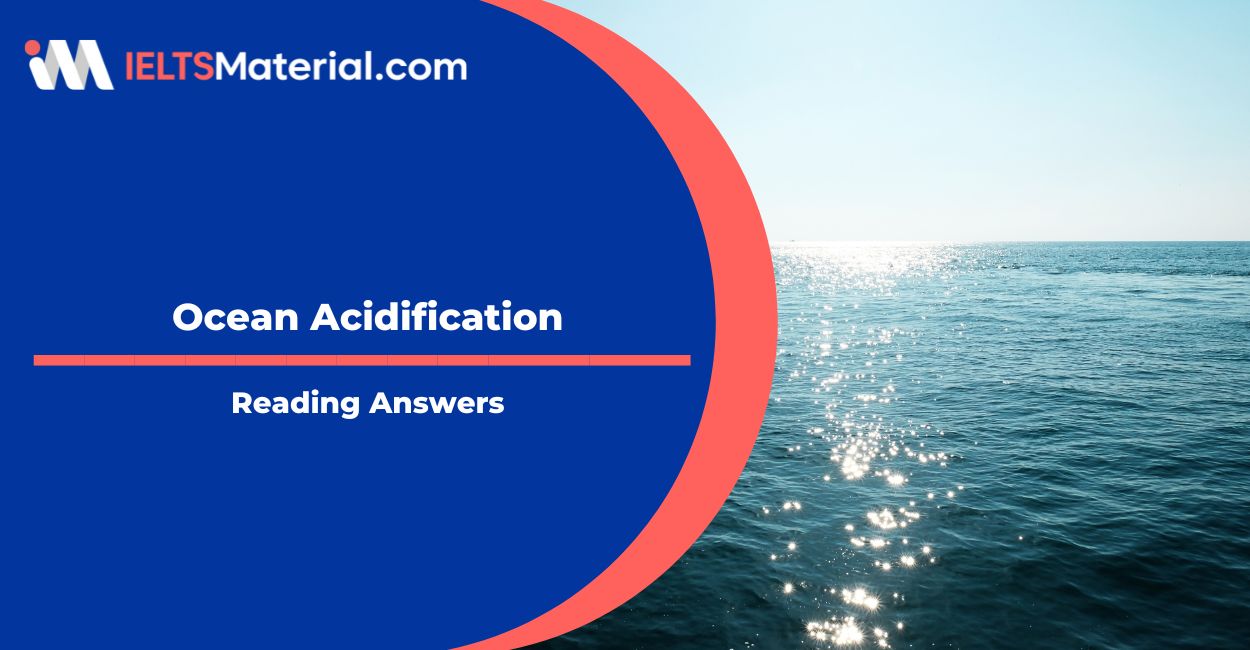Ocean Acidification Reading Answers
2 min read
Updated On
-
Copy link
Table of Contents

Limited-Time Offer : Access a FREE 10-Day IELTS Study Plan!
This article contains the Ocean Acidification reading answers.
Ocean Acidification is a real Reading test passage that appeared in the IELTS.
With diligent practice, the Reading Module can be the top-scoring category for IELTS Aspirants. To score well, you must understand how to approach and answer the different question types in the Reading Module.
By solving and reviewing Sample Reading Questions from past IELTS papers, you can ensure that your Reading skills are up to the mark. Take the practice test Ocean Acidification below and try more IELTS reading practice tests from IELTSMaterial.com.
Not sure how to answer IELTS Reading Flow Chart questions? Check out the video below for the latest tips and strategies!
For more Multiple Choice Questions practice, take a look at IELTS Reading Multiple Choice Example 1!
Ocean Acidification
You should spend about 20 minutes on Questions 1-13, which are based on the Reading Passage below. Find the practice test with the Ocean Acidification PDF here.
Answers
The answers with explanations are given below
| Question Number | Answers | Keywords | Location of Keywords |
|---|---|---|---|
| 1. | (small) flaps | Swim in a way, resembles butterfly flight, propelled by | Paragraph A, Line 5 |
| 2. | (their/the) Shells | Still swimming, were visibly dissolving | Paragraph A, Line 7 |
| 3. | (about )1/3 / A Third | Seas have absorbed about a third of all the fossil-fuel carbon | Paragraph C, Lines 3-4 |
| 4. | Rocks (on land) | Release of carbonates from rocks on land | Paragraph D, Lines 2-3 |
| 5. | (over) 100,000 | It took over 100,000 years, oceans to return to their normal state. | Paragraph E, Last 2 lines |
| 6. | Fishing and Tourism (in any order) | Coral reefs, are likely to be affected, fishing and tourism-based, losing billions of dollars | Paragraph F, Lines 4-6 |
| 7. | coral(s) | organisms with aragonite structures, will be hardest hit. | Paragraph G, Last 2 lines |
| 8. | microbes | Produce more volatile organic compounds | Paragraph H, Lines 6-7 |
| 9. | (the) atmosphere | Some of which escapes, causes clouds to develop | Paragraph H, Lines 7-8 |
| 10. | Clouds | Atmosphere, causes clouds to develop | Paragraph H, Line 8 |
| 11. | Cooler | More clouds, cooler conditions | Paragraph H, Lines 8-9 |
| 12. | Global warming | Cooler conditions, potentially slow global warming | Paragraph H, Last 2 lines |
| 13. | C | CO2, marine ecosystems considerably. | – |
Check More IELTS Reading Answers
Also check :
Practice IELTS Reading based on question types

Start Preparing for IELTS: Get Your 10-Day Study Plan Today!
Recent Articles

Nehasri Ravishenbagam

Haniya Yashfeen

Haniya Yashfeen

Haniya Yashfeen




Post your Comments